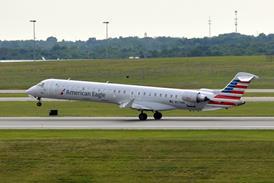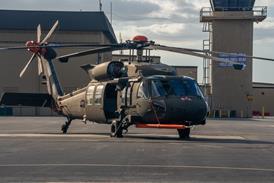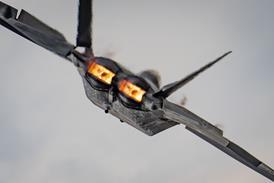Traffic has shown some early but encouraging signs of levelling off. However, in the midst of the returning optimism about filling capacity, the industry must not lose its focus on yields and costs. If it does, there is a risk of repeating the heavy losses of the bad old days.
It is not such a new world order after all. After 11 September, airline executives were quick to stress that the world had changed forever and that the old ways were gone for good. Six months later, the market appears to be coming back much faster than most had dared to hope at the height of the crisis. Perhaps there is even a chance that business might return to something approaching usual after all. But not all the old ways should be welcomed back, least of all the usual dash to add market share.
Clearly, the industry has some way to go before normal service is resumed. Latest forecasts, including those recently unveiled by the Federal Aviation Administration, suggest that it will be a year or so before traffic numbers recover the ground lost in 2001. Passenger traffic in the opening months of this year was still down by around 10% across the major markets. For an industry that saw passenger numbers go into freefall in the immediate aftermath of the terrorist attacks, even that double-digit decline looks like progress. Indeed, towards the end of last year, many airlines were still facing declines in the 20-30% region.
So air transport could be excused for breathing a collective sigh of relief that the sky has not fallen despite the darkest fears of September. News on the world economy in general, and the US economy in particular, too has added cheer. There is evidence that the USA may not even have entered an official recession. If forecasts are correct, it could start to rebound soon, with next year pencilled in for growth of close to 4%.
Carriers everywhere have been eager to add back the capacity that they cut so swiftly. In some cases that makes good sense. There was as much guesswork as hard science behind the initial groundings and network cuts that took place in the aftermath of 11 September. As traffic recovers, it makes sense to return aircraft into revenue service as swiftly as possible. But that return needs to be orderly and there are already hints of concern - certainly in the US industry - that some may be raising the bidding too fast.
Leo Mullin, chief executive of Delta Air Lines, admits that there is "real danger" of adding back capacity too fast. He says that for its part Delta has tried to be "conservative" in returning idle aircraft and hopes that others will be equally cautious. Mullin is not alone in his concern about capacity. Continental Airlines chief executive Gordon Bethune issued a similar warning while on a European trip and other carriers are watching anxiously to see how the consensus holds.
There is good reason for concern. Airlines have a strong herd instinct and a history of rushing into marketing battles where most investors would fear to tread. Only weeks after the US majors had more or less settled on a 20% capacity cut, accusations started to surface that not all were playing fair. In many cases the suspicions were valid.
And as Mullin was musing about the need for caution, United was unveiling plans for a big build-up of its Chicago O'Hare hub. US Airways unveiled a one-third increase in its transatlantic operations to bring them back to pre-attack levels by June. And even America West, on the critical list and in the federal government's emergency room as recently as December, says it will boost service from its Phoenix hub. In each case, furloughed employees will be recalled. In Europe and Asia too there is a detectable buzz of optimism among the airlines about the ability to return service this summer.
All this is welcome enough after the dark days of last year. However, traffic and capacity are only half the equation. There is also a matter of costs and yields. In the end, flying passengers at below cost is much more dangerous than not flying them at all. Admittedly, the picture on yields remains murky, although there is some evidence from preliminary US figures that they have actually been falling faster than traffic. US majors have deepened their price wars against the backdrop of cutting travel agent commissions. Europeans, meanwhile, are preparing to do battle with an apparently rampant low-cost sector. Lufthansa and Ryanair have been in court over their price war and SASis the latest to announce a response, cutting business fares by 30% within Scandinavia.
If fares fall, then costs must follow if the industry is to return to profit, and that is only going to get harder as memories of the crisis fade. As more than one analyst has bemoaned, for a while it actually looked as though airline finance departments were finally calling the shots - now marketeers appear to have regained the wheel.
It is worth remembering that in the Gulf War crisis the worst of the industry losses came, not in the immediate aftermath, but a year later as airlines bid the market down in order to fill their seats. The profit warnings have already started this time, too. It would be sad indeed if, after having worked so hard to avoid the pitfalls of the last recession and cut back so swiftly this time, the industry found itself once more bound up in battles for market share and finds itself caught holding too much capacity and too much cost.
Source: Airline Business























